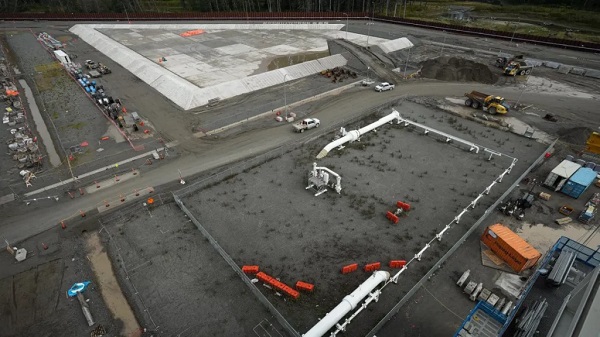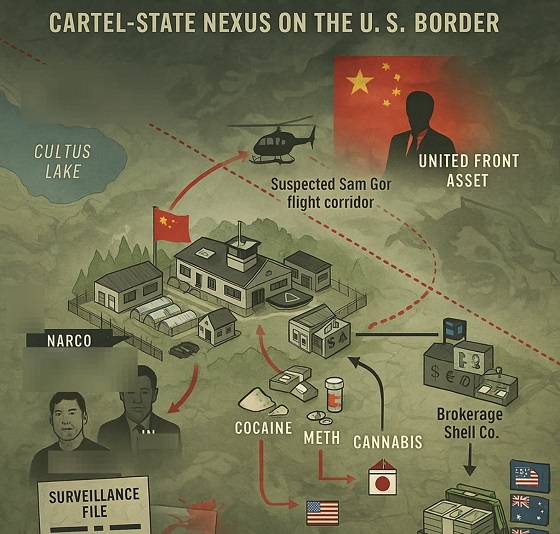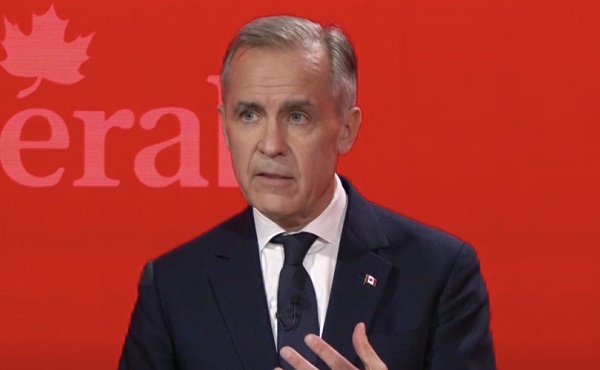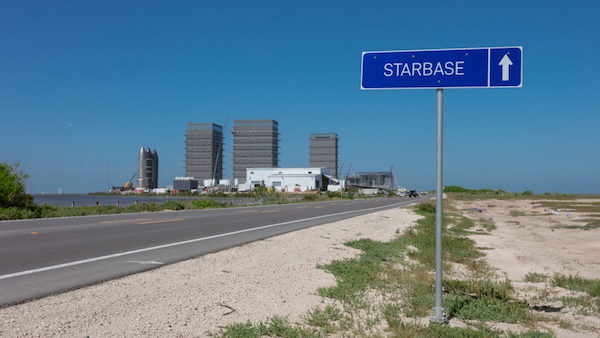National
New Quebec bill would prohibit teachers, school staff from wearing a crucifix

From LifeSiteNews
‘In Quebec, we made the decision that the state and the religions are separate and today we say the schools, the public schools are separate from religion’
The Canadian province of Quebec is moving ahead to expand its so-called religious symbols ban to now include all school staff, meaning no one who works at a school would be allowed to wear crucifixes or crosses of any kind.
On March 20, the Quebec provincial government of Premier François Legault tabled a bill which, if passed, would expand the province’s current religious symbols ban to stop “any religious indoctrination.”
“In Quebec, we made the decision that the state and the religions are separate and today we say the schools, the public schools are separate from religion,” said Minister of Education Bernard Drainville to reporters Thursday.
The new bill would update Quebec’s Education Act and would mandate that all students and staff at schools have their faces uncovered. It would also mandate teachers submit all of their educational plans to school principals so that they could be evaluated each year.
According to Drainville, the “idea” of the new bill is “to protect students from any religious indoctrination.”
He said, “If we are going to be coherent with this idea that a figure of authority should not wear a religious symbol, well, any adult can be a figure of authority and therefore no adults who are working within the school system should be allowed to wear a religious symbol.”
The Chair of the English Montreal School Board, Joe Ortona, blasted the bill as “a smokescreen for this government who’s sinking in the polls to try to show that they’re doing something.”
“And again, they’re not. They’re just coming up with phony solutions that really play to their base, which seems to be intolerant of any mention or of any public display of any religion whatsoever,” he added.
The announcement of the new proposed law comes after Premier François Legault in December of 2024 tasked his top cabinet officials with putting in place a law that would ban all praying in public in Canada’s only historically and culturally Catholic province.
“Seeing people praying in the streets, in public parks, is not something we want in Quebec,” Legault said at the time.
In 2019, Quebec passed its so-called secularism law, or Bill 21, that bans all public servants, public school teachers, police officers, government lawyers, and wildlife officials from wearing any religious symbols while at work, including crosses or crucifixes.
The province’s highest court upheld the law earlier this year after an appeal to overturn it failed.
Canada’s notwithstanding clause, which is in section 33 of the Canadian Charter of Rights and Freedoms, allows provinces to temporarily override sections of the Charter of Rights and Freedoms to protect new laws from being scrapped by the courts.
Canada’s leading constitutional freedom group, the Justice Centre for Constitutional Freedoms (JCCF), late last year sent a “demand letter” to Legault regarding his plan to ban public prayer.
“Such a ban is a totalitarian suppression of the freedoms of expression and of conscience and religion,” the JCCF said regarding its notice of sending the demand letter.
Quebec has been historically a Catholic province, however, since Vatican II, Mass attendance has plummeted and the provinces birth rate has nosedived to all-time lows. The province also has high abortion and euthanasia numbers, indicating a serious departure from the practice of the Catholic faith.
Alberta
Alberta’s oil bankrolls Canada’s public services

This article supplied by Troy Media.
 By Perry Kinkaide and Bill Jones
By Perry Kinkaide and Bill Jones
It’s time Canadians admitted Alberta’s oilpatch pays the bills. Other provinces just cash the cheques
When Canadians grumble about Alberta’s energy ambitions—labelling the province greedy for wanting to pump more oil—few stop to ask how much
money from each barrel ends up owing to them?
The irony is staggering. The very provinces rallying for green purity are cashing cheques underwritten not just by Alberta, but indirectly by the United States, which purchases more than 95 per cent of Alberta’s oil and gas, paid in U.S. dollars.
That revenue doesn’t stop at the Rockies. It flows straight to Ottawa, funding equalization programs (which redistribute federal tax revenue to help less wealthy provinces), national infrastructure and federal services that benefit the rest of the country.
This isn’t political rhetoric. It’s economic fact. Before the Leduc oil discovery in 1947, Alberta received about $3 to $5 billion (in today’s dollars) in federal support. Since then, it has paid back more than $500 billion. A $5-billion investment that returned 100 times more is the kind of deal that would send Bay Street into a frenzy.
Alberta’s oilpatch includes a massive industry of energy companies, refineries and pipeline networks that produce and export oil and gas, mostly to the U.S. Each barrel of oil generates roughly $14 in federal revenue through corporate taxes, personal income taxes, GST and additional fiscal capacity that boosts equalization transfers. Multiply that by more than 3.7 million barrels of oil (plus 8.6 billion cubic feet of natural gas) exported daily, and it’s clear Alberta underwrites much of the country’s prosperity.
Yet many Canadians seem unwilling to acknowledge where their prosperity comes from. There’s a growing disconnect between how goods are consumed and how they’re produced. People forget that gasoline comes from oil wells, electricity from power plants and phones from mining. Urban slogans like “Ban Fossil Fuels” rarely engage with the infrastructure and fiscal reality that keeps the country running.
Take Prince Edward Island, for example. From 1957 to 2023, it received $19.8 billion in equalization payments and contributed just $2 billion in taxes—a net gain of $17.8 billion.
Quebec tells a similar story. In 2023 alone, it received more than $14 billion in equalization payments, while continuing to run balanced or surplus budgets. From 1961 to 2023, Quebec received more than $200 billion in equalization payments, much of it funded by revenue from Alberta’s oil industry..
To be clear, not all federal transfers are equalization. Provinces also receive funding through national programs such as the Canada Health Transfer and
Canada Social Transfer. But equalization is the one most directly tied to the relative strength of provincial economies, and Alberta’s wealth has long driven that system.
By contrast to the have-not provinces, Alberta’s contribution has been extraordinary—an estimated 11.6 per cent annualized return on the federal
support it once received. Each Canadian receives about $485 per year from Alberta-generated oil revenues alone. Alberta is not the problem—it’s the
foundation of a prosperous Canada.
Still, when Alberta questions equalization or federal energy policy, critics cry foul. Premier Danielle Smith is not wrong to challenge a system in which the province footing the bill is the one most often criticized.
Yes, the oilpatch has flaws. Climate change is real. And many oil profits flow to shareholders abroad. But dismantling Alberta’s oil industry tomorrow wouldn’t stop climate change—it would only unravel the fiscal framework that sustains Canada.
The future must balance ambition with reality. Cleaner energy is essential, but not at the expense of biting the hand that feeds us.
And here’s the kicker: Donald Trump has long claimed the U.S. doesn’t need Canada’s products and therefore subsidizes Canada. Many Canadians scoffed.
But look at the flow of U.S. dollars into Alberta’s oilpatch—dollars that then bankroll Canada’s federal budget—and maybe, for once, he has a point.
It’s time to stop denying where Canada’s wealth comes from. Alberta isn’t the problem. It’s central to the country’s prosperity and unity.
Dr. Perry Kinkaide is a visionary leader and change agent. Since retiring in 2001, he has served as an advisor and director for various organizations and founded the Alberta Council of Technologies Society in 2005. Previously, he held leadership roles at KPMG Consulting and the Alberta Government. He holds a BA from Colgate University and an MSc and PhD in Brain Research from the University of Alberta.
Troy Media empowers Canadian community news outlets by providing independent, insightful analysis and commentary. Our mission is to support local media in helping Canadians stay informed and engaged by delivering reliable content that strengthens community connections and deepens understanding across the country.
Crime
Veteran RCMP Investigator Warns of Coordinated Hybrid Warfare Targeting Canada

 Sam Cooper
Sam Cooper
Central to this strategy is fentanyl—a substance whose reach now extends far beyond Canadian borders.
Fentanyl overdoses. Dirty money flooding real estate. Election interference. Foreign-backed antisemitism igniting across Canadian campuses. These are not isolated crises, warns Calvin Chrustie, a veteran RCMP national security and transnational crime investigator. They are interlinked weapons in an accelerating campaign of hybrid warfare targeting Canada—one that is hollowing out state institutions, fracturing social cohesion, and damaging our alliances. In the view of Chrustie, like other North American experts recently interviewed by The Bureau, adversarial regimes are exploiting Canada’s systemic vulnerabilities to destabilize the country from within, with consequences extending into the United States, Australia, the United Kingdom, Taiwan, Japan, and beyond.
In a sweeping interview with the Macdonald-Laurier Institute, Chrustie laid out a sobering account of how foreign states—chiefly China and Iran—are combining their intelligence capabilities with organized crime networks and proxies such as Mexican cartels to exploit Canadian systems. The Bureau has analyzed Chrustie’s comments and connected them to broader findings in its investigations into transnational crime and state-sponsored influence operations.
At the heart of Chrustie’s warning is a shift in how adversaries like China and Iran operate. No longer relying solely on spies or cyberattacks, they are weaponizing organized crime—leveraging fentanyl trafficking, corruption, and influence operations to destabilize democracies.
“Hybrid warfare is the blending of military and non-military means to weaken or destabilize a target,” Chrustie explained. “For hostile states, transnational crime is a tool—just like cyberattacks or disinformation. China, Russia, Iran, North Korea—the CRINKs—use TOC to raise money, create chaos, and undermine our institutions. TOC is no longer just criminal—it’s geopolitical.”
Fentanyl, in this context, is not only a public health catastrophe but a deliberate weapon.
“It’s about destabilizing communities, overwhelming public services, and hollowing out social cohesion,” he said. “Just like the Soviets used propaganda and the KGB used disinformation, modern adversaries use drugs, money laundering, and crime networks to erode their adversaries from within.”
This erosion now extends beyond physical harms into the social and political realm. Chrustie pointed to radical protest movements and the rise in antisemitic incidents on Canadian campuses as evidence of convergence between TOC and foreign influence operations.
“These aren’t disconnected trends,” he said. “The same threat actors behind fentanyl and money laundering are often involved in radicalization efforts. Iranian networks, for example, have long been tied to money laundering and extremist financing. And those networks are not operating in isolation. They’re aligned with China and the Mexican cartels.”
Chrustie argued that radical activism and identity-based polarization are being amplified not just by ideology, but by illicit foreign-backed financing and digital manipulation. “We’re talking about convergence,” he said. “These networks exploit every vulnerability—from public health to political discourse. Failing to connect the dots between TOC, extremism, and foreign interference means we’re always reacting too late.”
Central to this strategy is fentanyl—a substance whose reach now extends far beyond Canadian borders. “There’s no denying the scale of fentanyl production in Canada. It far outpaces our internal consumption,” he said. “We know Canadian labs are supplying Australia in large quantities. And we don’t know how much is crossing into the U.S.—because we’re not meaningfully tracking it. That lack of visibility alone is a serious national security concern.”
Seizures at the border are not the solution, Chrustie argued, because they’re not the full picture. “The U.S. has robust systems for this. Canada doesn’t,” he said. “So pointing to low seizures as proof of safety is misleading—it really just tells us what we’re not seeing.”
And what we’re not seeing, he says, includes deeply compromised infrastructure. “They exploit Canada’s weaknesses, especially in places like Vancouver, where strategic assets such as ports, shipping companies and supply chain infrastructure are key hybrid warfare targets,” he said. “The intent is to target North America through Vancouver-based assets, because it’s a lower-risk operating environment.”
The financial flows enabling this system are equally opaque—and equally dangerous. Chrustie cited the HSBC cartel laundering scandal, which led to a $1.9 billion U.S. settlement, as a historic warning that was never heeded. “The same cartel networks that emerged through the HSBC probe are engaged in Canada today,” he said.
“At one point, more encrypted communication companies linked to TOC and terrorist financers were based in Vancouver than anywhere else in the world,” he added. “These platforms were used globally—by cartels, arms traffickers, terrorists, state proxies. That tells you all you need to know about how Canada is perceived by adversaries.”
So why is Canada such a prime target? Chrustie identifies four layers of failure: strategy, structure, systems, and culture.
“We lack a cohesive, public national security strategy,” he said. “Unlike the United States or Australia, Canada doesn’t clearly define TOC as a strategic national threat. We don’t have a single, unified doctrine coordinating our federal agencies—police, intelligence, border services, foreign affairs. And TOC thrives in those gaps.”
“Our institutions are siloed,” he continued. “Policing is on the front line, but CSIS, CBSA, military and CSE aren’t always integrated. Right now, the RCMP is expected to shoulder most of the burden. But that’s unsustainable. We need an all-agency model.”
Canada’s legal and regulatory systems are another weak point. “Our legal system is designed for a domestic, rule-of-law environment. It’s ill-suited to confront global adversaries who don’t play by those rules,” Chrustie said. “Disclosure rules from Stinchcombe, Charter constraints, and evidentiary burdens mean that complex prosecutions often fall apart or never proceed.”
Finally, Chrustie warned that Canadian political culture is its most underappreciated vulnerability. “Canadians are culturally indifferent to national security,” he said. “We’ve taken a maternalistic approach—shielding the public from harsh realities, hoping to avoid panic or xenophobia. But that silence has allowed foreign actors to operate here with little resistance.”
“The historical paternalist approach of governments and bureaucrats—‘we won’t discuss these issues in public, we are the experts’—that thinking is outdated,” he said. “China, Russia, Iran and North Korea are the biggest fans of that mindset.”
Asked what a real solution looks like, Chrustie offered a sweeping and urgent framework: a national strategy naming hostile states and TOC as geopolitical threats; centralized agency coordination; intelligence-led disruption operations with allies abroad; and legal reforms enabling proactive countermeasures.
“We either need carve-outs with enhanced powers for TOC-related and foreign threat investigations—or we rely more on foreign-facing disruption efforts and accept that prosecutions are secondary,” he said.
He also emphasized grassroots engagement. “The solutions are in the communities, not in the siloed offices of governments,” Chrustie said. “We need to engage business leaders, civic organizations, educators, and diaspora communities. We need to build national resilience—not just enforce laws after the damage is done.”
His closing warning was as stark as his opening diagnosis.
“Canada is a saturated and vulnerable target,” he said. “And until we stop treating this as a criminal justice problem and start treating it as an integrated national security emergency, we will continue to lose ground.”
“There is no room for spectators.”
The Bureau is a reader-supported publication.
To receive new posts and support my work, consider becoming a free or paid subscriber.
Invite your friends and earn rewards
-

 Alberta2 days ago
Alberta2 days agoPremier Smith seeks Alberta Accord: Announces new relationship with Ottawa
-

 Energy2 days ago
Energy2 days agoIt’s time to get excited about the great Canadian LNG opportunity
-

 Crime2 days ago
Crime2 days agoInside B.C.’s Cultus Lake Narco Corridor — How Chinese State-Linked Syndicates are Building a Narco Empire in Canada
-

 International1 day ago
International1 day agoIce Surprises – Arctic and Antarctic Ice Sheets Are Stabilizing and Growing
-

 Energy2 days ago
Energy2 days agoIs the Carney Government Prepared to Negotiate a Fair Deal for the Oil, Gas and Pipeline Sectors
-

 Alberta2 days ago
Alberta2 days agoEnergy projects occupy less than three per cent of Alberta’s oil sands region, report says
-

 Health2 days ago
Health2 days agoJay Bhattacharya Closes NIH’s Last Beagle Lab
-

 Business2 days ago
Business2 days agoWelcome to Elon Musk’s New Company Town: ‘Starbase, TX’ Votes To Incorporate


